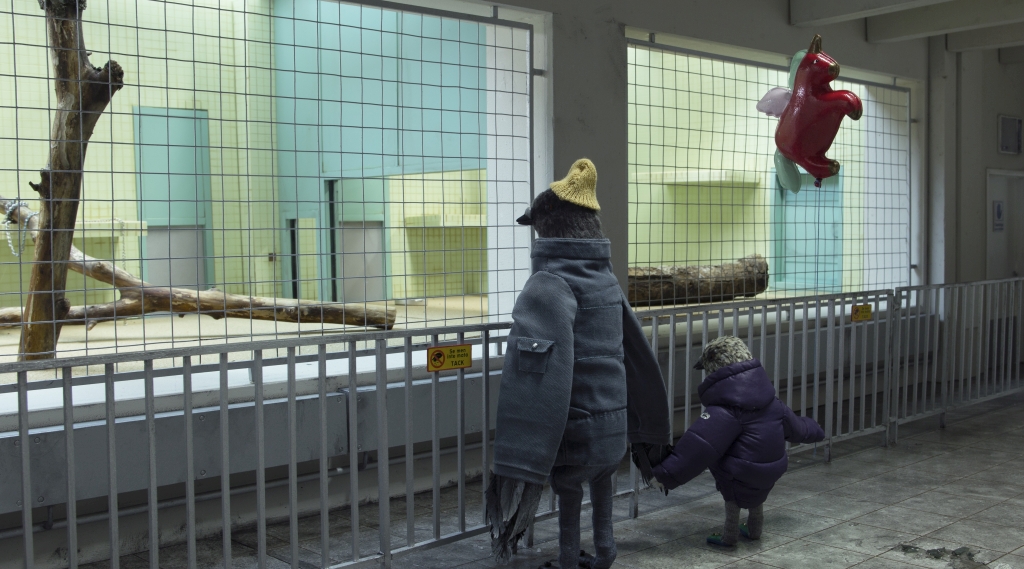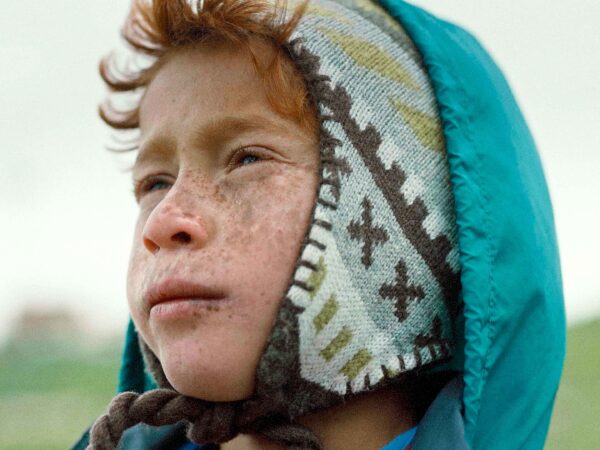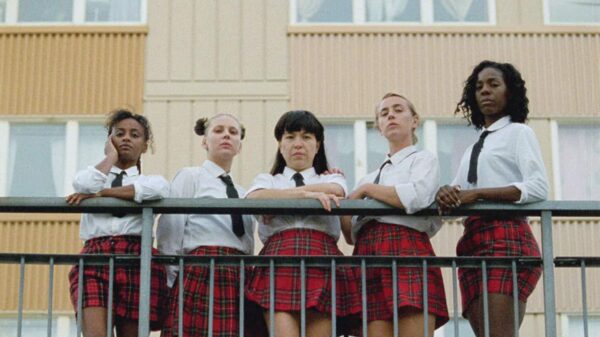Both Portrayal and Fable
Something To Remember
Niki Lindroth von Bahr’s Something to Remember portrays the anguish experienced by a highly developed society and its pessimism towards an inevitable demise.

It is a familiar scene out of the zoo: metal fences, a half-full garbage container, and a yellow sign that bans the feeding of animals. Bundled up in winter jackets and hats, a father and his child stand in front of the cage, a unicorn-shaped balloon swaying gently in the air. What is mundane is also curious: the cage is empty, and the father and child are birds themselves.
Like other films by Niki Lindroth von Bahr, Something to Remember is a stop-motion animation with immaculately crafted models and puppets. In six scenes, the film depicts life in a modern Western society from the zoo to the research room at the European Organisation for Nuclear Research (CERN). All characters are anthropomorphised animals: the prime minister is a mole, her assistant is a slug, and the scientists are beetles.
The filmmaker’s aesthetic language intertwines the realistic with the surreal. The doctor’s office is furnished with everything we would expect to see: a phone, a printer, plants, and an anatomy poster of the body. Yet it is a slug who is getting his health checked and a mouse who wears the white coat. The costumes make the characters believable and, at the same time, distinctively absurd. The slug wears clothing that resembles those of a human office worker: a button-up shirt (with no sleeve holes) and one pant (not a pair). The sphygmomanometer, a common device that measures blood pressure with an inflatable strap around the human arm, is reinterpreted as a single band around the slug’s body.
The absurdities of the film are not subtle, yet they appear natural and enmeshed within the world we know. By observing cinematography, the film connects what we recognise—the doctor’s office, the gas station, the furniture store—with what we can only imagine—a worm filling up the gas tank or a seal buying a mattress. These skillfully arranged contrasts bring constant visual surprises and humour. Even the title card, which appears before the first scene, hints at what the viewers are about to experience. With old-school serif typography and line-drawn borders of wild strawberries, the title card reminds one of an unsuspecting children’s book. Examined closely, however, a gas pump is hidden among the berries, growing out of a potted plant.
Similar to Von Bahr’s previous film, The Burden (2017), Something to Remember employs music as narration. The film uses new lyrics over the melody of “Grodans Sång”, composed by the late Alice Tegnér, a famous Swedish children’s song composer. Whereas The Burden is a musical with synthesizers and autotunes, the score for Something to Remember is resolutely choir-like. As the scenes slowly unfold, the composition gives the film the quality of a sinister nursery. “The devil sees you no matter what you do,” sings the bird child in the film’s beginning, “when you are dressed all pretty and fine, then he will be ready to greet you.”
The original text of the song by Elsa Beskow, a children’s book author and Tegnér’s contemporary, paints a night in which animals gradually tire and fall asleep. The newly-written lyrics allude to the dooming of the world, which—coincidentally or not—pays a stygian tribute to the original. The salesman awaits Judgement from Father. The prime minister announces the breakdown of a monarchy. The patient is eternally plagued by grief. At CERN, with wine bottles strewn next to the monitors, drunk scientists ask for delivery from God just before everything blacks out. Apart from the main music score, other sounds—sparsely yet precisely inserted—contribute to an uncanny atmosphere. A single cough from the bird parent punctuates the quietness of the zoo, and a loud camera flash pokes fun at the somber press conference at the parliament.
“Both portrayal and fable,” Nabokov once remarked on Kafka’s Metamorphosis. In the same regard, Lindroth von Bahr’s films are both observations and speculations of reality. Something to Remember portrays the anguish experienced by a highly developed society and its pessimism towards an inevitable demise. The Burden illustrates the desolation of the post-industrial “middle of nowhere”—a freeway junction with a hotel and various offices—with its artificial brightness and orderliness. In Bath House (2014), miscommunication and passive aggression fester among characters at a swimming pool, eventually turning the pedestrian location into a site of destruction.
In these dark fables, time spans across an hour, a day, or ten years—it does not matter. They are moments from the present or the near future. With a bizarre, cute and gloomy cast of quasi-animal-humans, such moments reveal to us how the world suffers and how, as the mouse smoking a cigarette at the gas station sings in the film, “new life [replaces] the old, and there is nothing we can do.”




There are no comments yet, be the first!